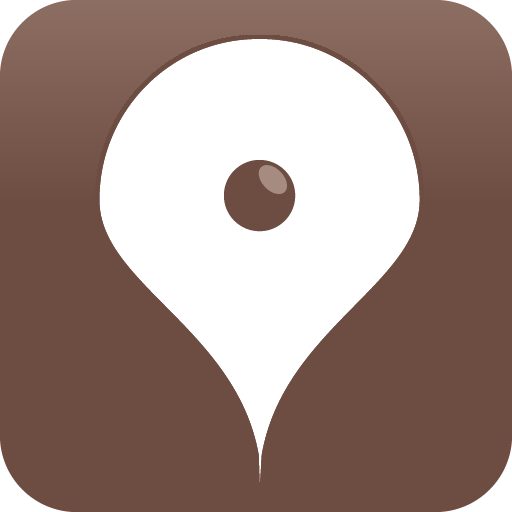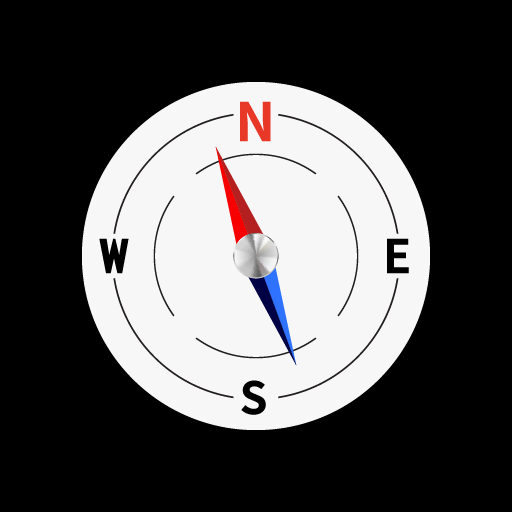My GPS location manager helps you to retrieve actual position (latitude, longtitude) and share it using any application available on device


| Name | My Location |
|---|---|
| Publisher | Tomas Tolsicky |
| Genre | Tools |
| Size | 2MB |
| Version | 1.4 |
| Update | July 8, 2025 |
| Get it On | Play Store |
| Report | Report Apps |
Preview
My Location: Your Complete Guide to Modern Location Services
Location technology has become the invisible thread connecting our digital and physical worlds. From finding the nearest coffee shop to sharing your whereabouts with friends, “My Location” services have revolutionized how we navigate, communicate, and stay safe. Understanding these services—and how to use them effectively—is essential for making the most of our connected devices while protecting our privacy.
What is “My Location”?
“My Location” refers to the collection of technologies and services that determine and share your current geographical position using digital devices. Unlike traditional paper maps or basic GPS units, modern location services integrate multiple data sources to provide real-time, accurate positioning that can be instantly shared across applications and platforms.
These services go beyond simple coordinates. They transform raw location data into actionable information, whether that’s turn-by-turn directions, location-based recommendations, or emergency assistance. The technology combines hardware sensors, software algorithms, and network connections to create a seamless experience that feels almost magical to users.
Modern location services differ from traditional navigation tools in several key ways. They’re interactive rather than static, connected rather than isolated, and intelligent rather than purely informational. When you use a location sharing app or GPS location manager, you’re tapping into a sophisticated network that processes millions of location requests simultaneously.
History and Evolution
The journey of location services began with the Global Positioning System (GPS), originally developed by the U.S. Department of Defense in the 1970s. Initially restricted to military use, GPS became available to civilians in the 1980s, though with intentionally reduced accuracy.
The real breakthrough came in 2000 when President Bill Clinton ordered the removal of Selective Availability, dramatically improving GPS accuracy for civilian use. This decision paved the way for the location-based services we know today.
The early 2000s saw the emergence of the first consumer GPS devices, bulky units that required clear sky views and several minutes to acquire a signal. The introduction of smartphones changed everything. Apple’s iPhone in 2007 included location services, followed by Google’s Android platform, which made location awareness a standard feature rather than a specialty tool.
Key milestones included the launch of Google Maps in 2005, the introduction of location-based social networking with services like Foursquare in 2009, and the development of indoor positioning systems that work without GPS signals. Each advancement made location services more accurate, faster, and more versatile.
How It Works: The Technology Behind My Location
Understanding how location services work reveals the sophisticated technology operating behind the scenes. Modern devices use a combination of GPS, Wi-Fi, cellular data, and various sensors to determine your position with remarkable accuracy.
GPS Technology
GPS remains the backbone of location services. Your device receives signals from multiple satellites orbiting Earth, calculating your position based on the time it takes signals to travel from satellites to your device. This process, called trilateration, requires signals from at least four satellites to determine your three-dimensional position and account for timing errors.
Wi-Fi and Cellular Positioning
When GPS signals are weak or unavailable—such as indoors or in urban canyons—your device uses Wi-Fi and cellular positioning. Wi-Fi positioning works by identifying nearby wireless networks and comparing them to databases of known network locations. Cellular positioning uses cell tower triangulation, determining your position based on signal strength and timing from multiple towers.
Sensor Integration
Modern smartphones include accelerometers, gyroscopes, and magnetometers that help refine location accuracy. These sensors detect movement, orientation, and direction, allowing your device to track your position even when GPS signals are temporarily lost.
GPS Location Manager Apps
A GPS location manager app coordinates these various technologies to provide the most accurate position possible. These apps prioritize different positioning methods based on availability and accuracy, seamlessly switching between GPS, Wi-Fi, and cellular data as needed.
Quality GPS location manager apps offer features like rapid position acquisition, coordinate sharing, and customizable messaging templates. They’re designed to work on both mobile phones and tablets, utilizing all available sensors to provide the best possible accuracy information along with latitude and longitude coordinates.
Practical Applications
The versatility of My Location services has created applications across numerous sectors, transforming how we navigate, communicate, and respond to emergencies.
Navigation and Mapping
Turn-by-turn navigation represents the most familiar application of location services. Modern navigation apps provide real-time traffic updates, alternative route suggestions, and arrival time predictions. They’ve evolved from simple route planning tools to comprehensive travel companions that consider traffic patterns, road conditions, and user preferences.
Indoor navigation has emerged as a growing application, helping users navigate complex buildings like airports, shopping centers, and hospitals. These systems use Wi-Fi positioning and beacon technology to provide directions where GPS signals can’t reach.
Social Networking and Location Sharing
Location sharing apps have transformed social interaction, allowing friends and family to share their whereabouts in real-time. These apps range from simple coordinate sharing to sophisticated platforms that provide location-based recommendations and social features.
The ability to share location as SMS or email with preselected contacts has become particularly valuable for safety and coordination. Users can instantly send their exact coordinates to emergency contacts or share meeting locations with friends.
Emergency Services and Disaster Response
Location services play a crucial role in emergency response. When you call emergency services, your location is automatically transmitted, enabling faster response times. This capability has saved countless lives, particularly in situations where callers cannot verbally describe their location.
During natural disasters, location services help coordinate rescue efforts, track evacuation routes, and provide real-time updates to affected populations. Emergency management agencies use location data to deploy resources efficiently and communicate with people in danger zones.
Business and Commerce
Retailers use location services for inventory management, customer engagement, and fraud prevention. Location-based marketing delivers targeted advertisements and promotions based on user proximity to stores or events.
Logistics companies rely on location tracking for fleet management, delivery optimization, and customer notifications. The ability to track packages and vehicles in real-time has become a standard expectation in modern commerce.
Privacy and Security Concerns
While location services offer tremendous benefits, they also raise significant privacy and security concerns. Understanding these risks is essential for making informed decisions about location sharing.
Data Collection and Storage
Location services collect vast amounts of data about user movements, creating detailed profiles of daily routines, frequently visited locations, and travel patterns. This information can be valuable to advertisers, but it also represents a significant privacy risk if misused or breached.
Companies may store location data for extended periods, sharing it with third parties or using it for purposes beyond the original service. Users often have limited visibility into how their location data is collected, stored, and used.
Location Services Privacy Best Practices
Protecting your location privacy requires active management of device settings and app permissions. Review location permissions regularly, granting access only to apps that genuinely need it for their core functionality.
Use precise location settings judiciously. Many apps function adequately with approximate location rather than exact coordinates. Disable location history features unless you specifically benefit from them, and regularly review and delete stored location data.
Consider using location services privacy modes that limit data collection or sharing. Many devices offer settings that prevent location tracking entirely or restrict it to specific times or applications.
Security Vulnerabilities
Location data can be exploited by malicious actors for stalking, burglary, or identity theft. Geotagged photos shared on social media can reveal home addresses or daily routines. Public Wi-Fi networks can be exploited to track user movements across different locations.
Protecting against these vulnerabilities requires awareness of what information you’re sharing and with whom. Use reputable location sharing apps with strong security measures, avoid sharing precise location data publicly, and be cautious about location-based social media posts.
Future Trends
Location technology continues to evolve, with several emerging trends promising to make services more accurate, useful, and integrated into daily life.
Enhanced Accuracy
Next-generation GPS systems and improved sensor technology are pushing location accuracy to centimeter-level precision. This enhanced accuracy enables new applications like autonomous vehicle navigation, precision agriculture, and augmented reality experiences that require exact positioning.
Integration with IoT Devices
The Internet of Things (IoT) is expanding location services beyond smartphones to include smart home devices, wearables, and connected vehicles. This integration creates opportunities for more sophisticated automation and context-aware services.
Real-Time Tracking Advancements
Improved real-time tracking capabilities enable new applications in logistics, healthcare, and safety monitoring. These systems can track multiple objects or people simultaneously, providing comprehensive situational awareness for various industries.
Indoor Positioning Systems
Advanced indoor positioning systems using ultra-wideband technology, computer vision, and machine learning are making indoor navigation as accurate as outdoor GPS. These systems will enable new applications in retail, healthcare, and smart buildings.
Augmented Reality Integration
The combination of precise location data with augmented reality creates immersive experiences that overlay digital information onto physical locations. This integration will transform navigation, tourism, and education by providing contextual information about the surrounding environment.
Embracing Location Technology Responsibly
My Location services have fundamentally changed how we interact with the world around us. From basic navigation to complex emergency response systems, these technologies have become essential tools for modern life. The key to maximizing their benefits lies in understanding how they work, what they can do, and how to use them safely.
As location technology continues to advance, users must balance convenience with privacy, embracing the benefits while protecting personal information. By understanding location services privacy, choosing reliable GPS location manager apps, and maintaining awareness of data sharing practices, we can enjoy the advantages of location technology while minimizing potential risks.
The future promises even more sophisticated location services that will further integrate into our daily lives. Whether through enhanced accuracy, IoT integration, or augmented reality applications, location technology will continue to transform how we navigate, communicate, and interact with our environment. Understanding and responsibly using these tools today prepares us for the connected world of tomorrow.
Download My Location
You are now ready to download My Location for free. Here are some notes:
- Please check our installation guide.
- To check the CPU and GPU of Android device, please use CPU-Z app






























